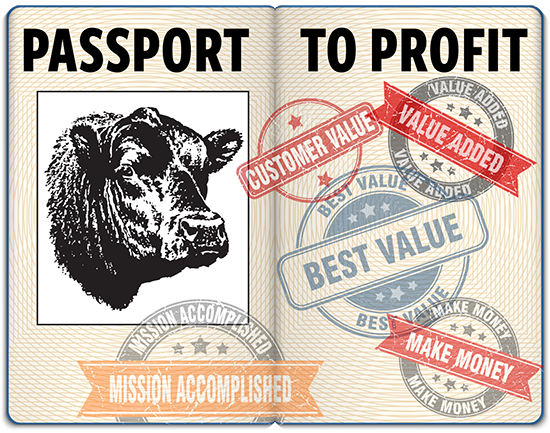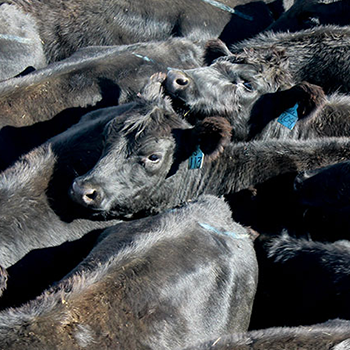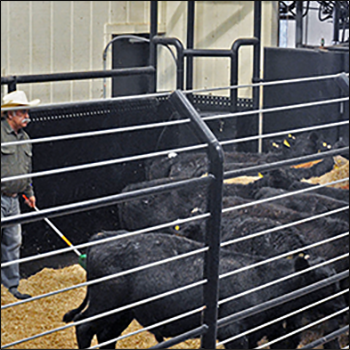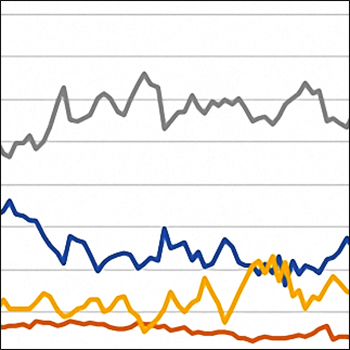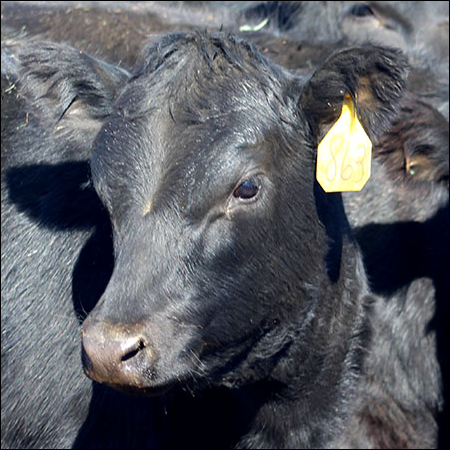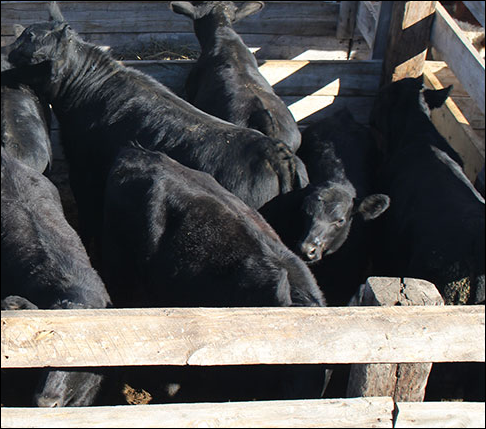
Cornstalks in Finishing Ration: How Much Is Too Much?
Research evaluates effects of cornstalk inclusion rate on rumination and ruminal pH in finishing beef steers.
Coarse-textured roughages, such as cornstalks, are high in neutral detergent fiber (NDF) and function to create a fibrous mat in the rumen that aids in stimulating rumination, buffering ruminal pH, and increasing muscle tone of the rumen. However, increased roughage dilutes available energy in finishing diets.
A 2016 survey of consulting feedlot nutritionists showed that for finishing cattle diets, the majority of the nutritionists’ clients (37.5%) used corn silage as the primary roughage source, followed by the use of cornstalks (29.2%). In a 2007 survey, the primary roughage source used in finishing was corn silage. However, in the earlier survey, none of the clients used cornstalks.
Optimization of roughage levels in high-concentrate diets is necessary to maximize animal performance. However, the effect of dietary roughage level on feedlot performance is a balance between energy consumed and the status of ruminal health.
| Table 1: Effects of cornstalk (CS) inclusion rate on feedlot performance, carcass characteristics, ruminal pH and rumination time |
 |
| Click here for larger image. |
Texas A&M University and West Texas A&M University researchers conducted an experiment to (1) evaluate feedlot performance, rumination and ruminal pH of cattle consuming a finishing diet with increasing cornstalk inclusion rates and (2) determine the appropriate cornstalk level that contributes to optimal performance while maintaining rumination and ruminal pH.
In this experiment, 50 crossbred steers [initial weight = 666 pounds (lb.)] were randomly allocated to one of three dietary treatments, as well as one of nine Calan headgates (to measure individual feed intakes) within six pens (three steers per treatment per pen). Dietary treatments were diets based on steam-flaked corn, with varying concentrations of cornstalks (ground through a 3-inch screen): 5% cornstalks, 10% cornstalks, and 15% cornstalks on a dry-matter (DM) basis.
As the cornstalk inclusion rate decreased in the diet, it was replaced with wet corn gluten feed (Sweet Bran; Cargill Inc., Minneapolis, Minn.) so the portion of fiber that was removed with cornstalks remained in the diet (fiber concentrations remained consistent across experimental diets).
Each animal was fitted with a sensory accelerometer that recorded swallowing and regurgitation of a feed bolus. Data were recorded continuously 24 hours a day in 2-hour increments throughout the study to quantify steer rumination behavior (minutes per day).
In addition, half of the steers from each dietary treatment received an indwelling rumen bolus to monitor pH. Ruminal pH data were recorded in 15-minute intervals to quantify changes in ruminal pH relative to dietary treatments.
These researchers reported that neither initial nor final shrunk body weight differed (see Table 1). As cornstalks inclusion rate increased, average daily gain (ADG) and gain efficiency (Gain:Feed ratio) decreased linearly (P ≤ 0.02), whereas dry-matter intake (DMI) of cattle consuming 10% cornstalks and 15% cornstalks was greater (P ≤ 0.05) than those consuming 5% cornstalks. Steers consuming the 5% cornstalk diet outgained those consuming 10% cornstalks by 2.4% and gained 11.5% faster than 15% cornstalk steers. Steers consuming the 5% cornstalk diet had a 13.2% increase in efficiency and consumed 0.9 lb. per day less feed compared with 10% or 15% cornstalk steers (P ≤ 0.01).
In addition, increasing dietary cornstalks to 15% linearly decreased (P ≤ 0.04) fat thickness, yield grade and marbling score and tended to decrease hot carcass weight (P = 0.10). Ruminal pH tended (P < 0.09) to be greatest in 15% cornstalk steers (6.27), whereas ruminal pH of 10% cornstalk and 5% cornstalk steers were not different (5.98 and 6.05, respectively). Rumination time was greatest (P ≤ 0.01) for steers consuming the 15% cornstalk diet (362.5 minutes per day) and least with the 5% cornstalk diet (P = 0.03).
In conclusion, increasing cornstalk inclusion rate from 5% to 15% in the diet of finishing beef steers increased ruminal pH and rumination, which may seem beneficial for rumen health. However, feeding higher cornstalk levels decreased performance. These results indicate that when cornstalks are included at 10% of a finishing diet, there is an increase in hot carcass weight, while feedlot performance, ruminal pH and rumination are maintained.
Editor’s note: Britt Hicks is an area extension livestock specialist for Oklahoma State University. Photo courtesy Certified Angus Beef LLC.
Samuelson, K.L., M.E. Hubbert, M.L. Galyean, and C.A. Löest. 2016. Nutritional recommendations of feedlot consulting nutritionists: The 2015 New Mexico State and Texas Tech University survey. J. Anim. Sci. 94: 2648-2663.
Vasconcelos, J.T. and M.L. Galyean. 2007. Nutritional recommendations of feedlot consulting nutritionists: The 2007 Texas Tech University survey. J. Anim. Sci. 85: 2772-2781.
Jennings, J.S., C.L. Lockard, L.O. Tedeschi, and T.E. Lawrence. 2020. Effects of cornstalk inclusion rate on rumination and ruminal pH in finishing beef steers. J. Anim. Sci. 36:377-388
